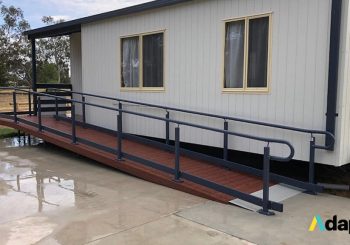To ensure equal opportunities and access for all, as well as for the better implementation of disability laws and regulations, the Australian government created the Disability Discrimination Act (DDA). The Australian Standards (AS) guidelines supplements this for standard specifications and design towards a safe and reliable environment.
These standards can be used in any industry and create an inclusive environment for people with different disabilities. To help you learn more about it, we have summarised below the DDA and AS guidelines.
Disability Discrimination Act
The Disability Discrimination Act 1992 prohibits discrimination against a person because of their disability in any aspect of their public life. This includes education, employment, accessing public spaces, using commercial services, as well as purchasing or renting a home.
The act also covers people both with temporary and permanent disabilities—including physical, mental, psychosocial, and more. It also includes people with diseases, physical disfigurement, and injuries. Further, past, potential, and assumed disabilities are also considered. To learn more about the DDA, you can visit this website.
For accessibility, the DDA requires that all public places such as government offices, schools, parks, and commercial establishments should have accessibility ramps installed. Building owners must also observe the following dimensions of the ramps:
- A single step should not exceed 1,900 millimetres
- Threshold ramps should not be longer than 280 millimetres
- To accommodate mobility aid equipment, the ramp width should be around 1,000 metres
- The space between the ramp’s handrails should also follow the width at 1,000 metres
- The gradient slope of ramps measuring 1,900 millimetres should be less than 1:10 of its length; smaller ramps should not exceed 1:8, and ramps longer than 1,900 millimetres should have a minimum slope of 1:14.
Australian Standards
As mentioned above, the AS Guidelines ensure reliability throughout the products, services, and experiences for everyone. These standards are divided into Mandatory and Voluntary.
Mandatory Standards are enacted laws that require penalties for non-compliance. These include Safety Standards focused on performance, design, and methods of manufacturing processes, as well as construction and composition. There is also the Information Standards, which ensures proper labelling, instructions, and warnings, on prescribed information.
Voluntary Standards are not automatically regarded as legal requirements and are often implemented by organisations such as the Standards Australia and the International Organization for Standardization (ISO).
Lastly, both the DDA and the AS require the following safety features on accessibility ramps:
- Non-skid features can be textured surfaces, grip tape, traction mats, and other anti-slip measures
- Elliptical or circular cross-section handrails with a diameter of 30 to 50 millimetres, with the top portion being 865 to 1000 millimetres from the ramp’s surface
Through the AS, all buildings and structures in Australia are required to comply with the DDA guidelines. Further, under the AS1428. 1-2009, handrails should be designed according to the required specifications so people with disability can use them with ease and safety.
For wheelchair ramps and rails that are intuitive, custom-designed, and in compliance with the DDA and AS guidelines, contact Adapta. We have over 20 years of experience in creating inclusive and accessible spaces for everyone.




